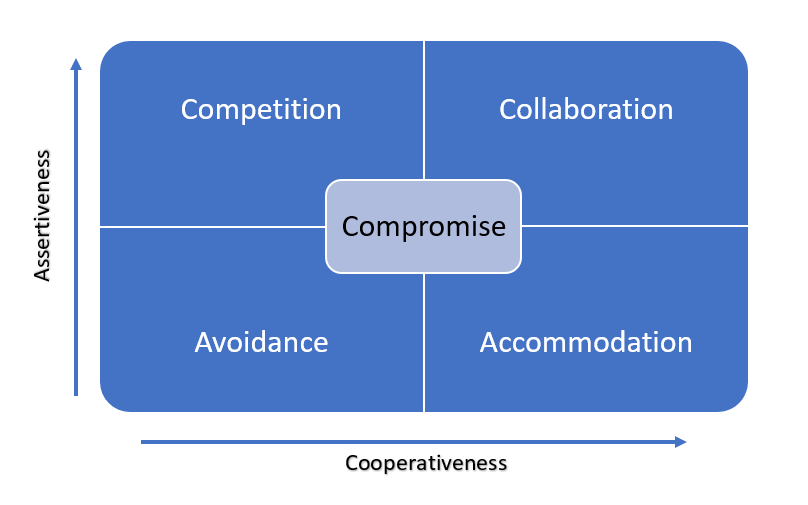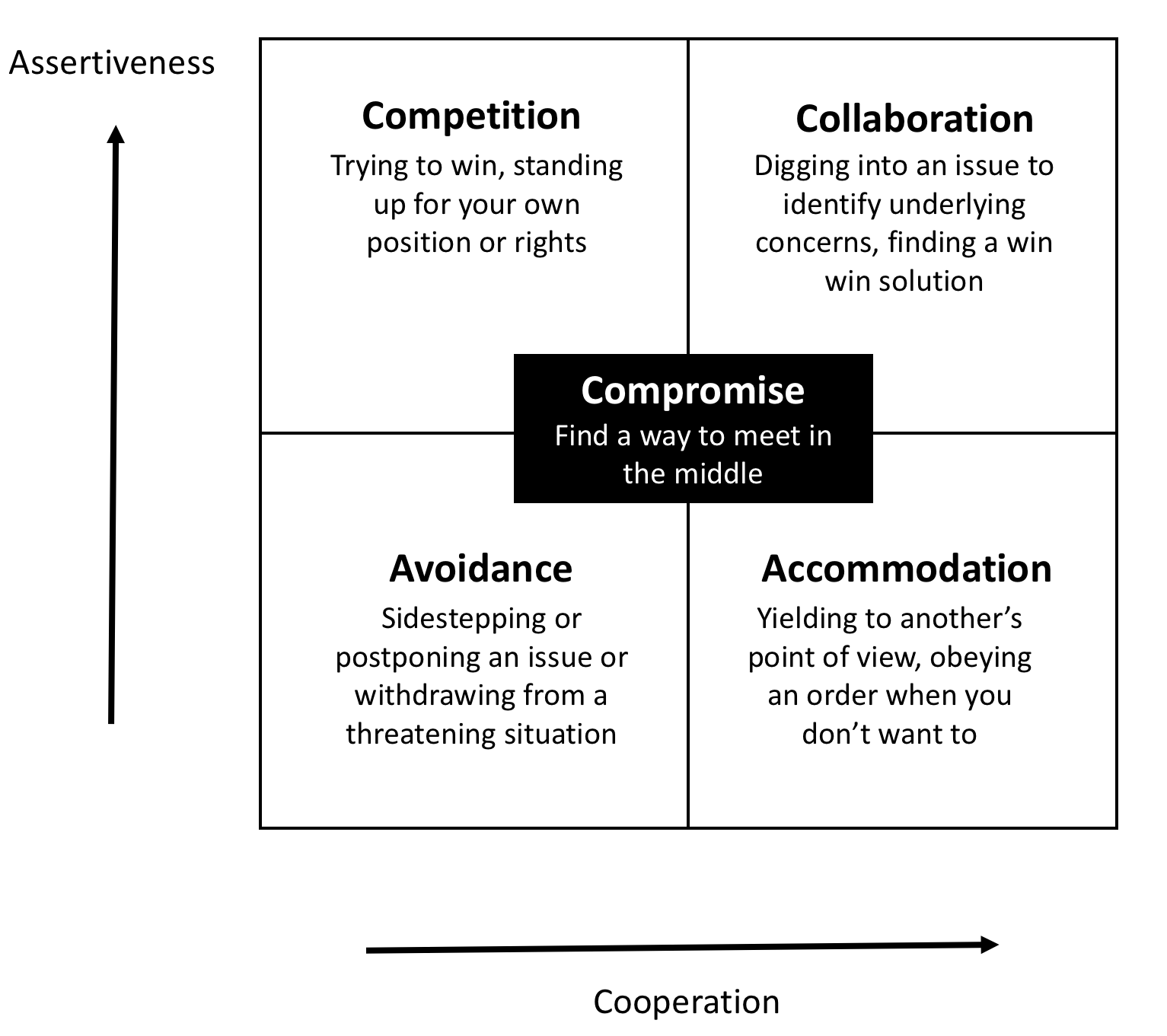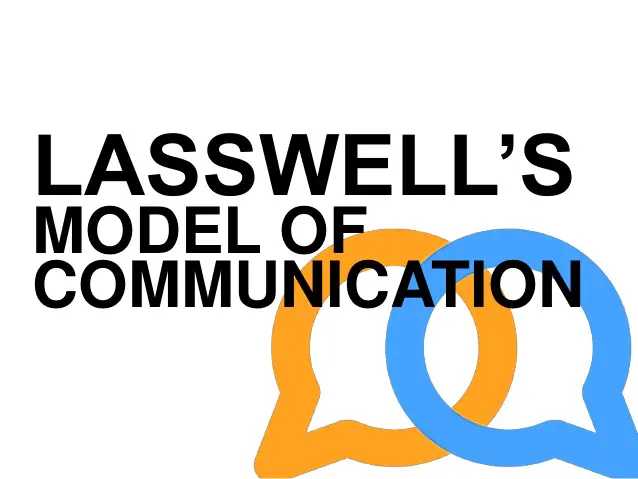Thomas Kilmann Conflict Resolution Model | Conflict Management Styles & Strategies
Thomas Kilmann Conflict Resolution Model
Thomas Kilmann’s model was developed in the 1970s by Kenneth Thomas and Ralph Kilmann, describing the conflict as the condition in which people’s concerns are incomparable. If the things which two people care about are opposed, then there is conflict.
Thomas and Kilmann’s Conflict resolution model is really useful to understand how to deal with conflict with any of your stakeholders. That’s your customers, your staff, your suppliers, etc.
Kenneth Thomas and Ralph Kilmann identified five approaches to resolving conflict. Each approach is described according to the level of assertiveness on one axis and the other axis level of cooperation.
The Thomas Killman model of Conflict Management organizes five conflict management styles based on these two dimensions,

Assertiveness and cooperation.
Thomas Kilmann Assertiveness
In this instance, assertiveness is the individual’s level of motivation to achieve their own goals and objectives.
Thomas Kilmann Cooperation.
The corporations’ axis is about the individual’s willingness to allow the other party to achieve their goals or objectives. There are five key styles. These are avoiding, competing, accommodating, compromising, collaborating.
People react differently. The conflict or better conflicting interests. Every style has different degrees of assertiveness and cooperative nous.
In other words, how much focuses on your concerns on how much unsatisfying the other person’s needs?
Thomas Kilmann Conflict Resolution Styles & Strategies
In any conflict situation, you may respond in several ways by;
💥🎁 New Year & Easter Deals On Amazon !
Don't miss out on the best discounts and top-rated products available right now!
🛒 Shop Now and Save Big Today!*As an Amazon Associate, I earn from qualifying purchases.
- Competing Conflict Style
- Accommodating Conflict Style
- Avoiding Conflict Style
- Collaborating Conflict Style
- Compromising Conflict Style
Thomas Kilmann Competing Conflict Style
The competing style is characterized by high assertiveness and low cooperation with the participants seeking to reach their preferred outcomes at other individuals’ expense.
It is a win-lose approach; you act in a way to achieve your goals without seeking to cooperate and then maybe at the expense of others.
When competing, an individual pursues their concerns at the other person’s expense, using whatever power seems appropriate to win his or her position.
Competing in conflict might mean standing up for your rights, defending a position you believe is correct, or merely trying to win.
Competing Conflict Style Example
A competing Conflict Style approach could be appropriate when quick, decisive action is required, for example, in an emergency situation. However, continued use of this used of this resolution is going to create resentment in the longer term.
Avoiding Conflict Style
Avoiding is when you simply avoid the issue. You’re not helping others reach their goals, and you’re not pursuing your own. This involves low assertiveness and low cooperation. It’s designed to avoid conflict and quite often means that no party is satisfied.
When avoiding, an individual does not immediately pursue his or her concerns or those of the other person. He or she does not address the conflict.
Avoiding might take the form of diplomatically sidestepping an issue, postponing a problem until a better time, or simply withdrawing from a threatening situation.
It’s a lose-lose scenario, and usually, the original problem is not directly addressed or resolved. There is a sense of ignoring it, and it will go away.
Avoiding Conflict Style Example
Avoiding Conflict Style works when the issue is trivial or when you have no chance of winning. It is also very effective when the atmosphere is emotionally charged, and you need to create some space.
💥🎁 New Year & Easter Deals On Amazon !
Don't miss out on the best discounts and top-rated products available right now!
🛒 Shop Now and Save Big Today!*As an Amazon Associate, I earn from qualifying purchases.
It can also be an option when tackling the problem more assertively might cause more disruption than it resolves.
This strategy can also allow for cooling-off periods. However, avoidance can cause significant problems in the longer term, as a long-running issue is likely to build up the resistance on potential resentment over time.
It could be useful when early she was trivial may burn out of its own accord, or it is likely to have a very short lifespan.
Collaborating Conflict Style
The collaborating strategy is high on both the assertiveness and corporations’ style. Collaborating can also be described as a win-win approach scenario as both sides creatively work towards a solution that meets all persons’ objectives and goals.
When collaborating, individual attempts to work with the other person to find a solution that fully satisfies both concerns; it involves digging into an issue to identify the underlying concerns of the two individuals and find an alternative that meets both sets of circumstances.
Collaborating between two persons might take the form of exploring a disagreement to learn from each other’s insights, resolving some conditions that would otherwise have them competing for resources, or confronting and trying to find a creative solution to an interpersonal problem.
Collaborating Conflict Style Example
Collaborating Conflict Style can be effective for complex scenarios where you need to find a novel solution. This can also mean reframing the challenge to create a bigger space and room for everybody’s ideas.
However, this is where we apply high assertiveness on high cooperation from all parties. This is the ideal position for a positive outcome.
Collaborating Conflict Style Pros and Cons
While this can create an ideal outcome, it can be a complex and time-consuming process to achieve. Again, another downside is that it requires a high degree of trust, and reaching a consensus can require a lot of time and effort to get everybody on board.
💥🎁 New Year & Easter Deals On Amazon !
Don't miss out on the best discounts and top-rated products available right now!
🛒 Shop Now and Save Big Today!*As an Amazon Associate, I earn from qualifying purchases.
Accommodating Conflict Style
Accommodating is when you cooperate to a high degree, and it may be at your own expense and work against your own goals. Accommodating Conflict Style involves low assertiveness and high cooperation and is an approach that indicates a willingness to satisfy one’s needs over another’s needs.
The accommodating style includes a high degree of cooperation. A person using this style will put aside their own goals in favor of the other person.
When accommodating, an individual neglects his or her concerns to satisfy the other person’s problems; there is an element of self-sacrifice in this mode.
Accommodating might take the form of selfless generosity or charity, obeying another person’s order when you would prefer not to, or yielding to another’s point of view.
Accommodating Conflict Style Example
This accommodating Conflict Style is appropriate when they realize that their needs are less than the other person’s or realize that they have been in the wrong. Whoever has taken this to an extreme, this could be a lose-win situation.
The approach is effective when the other party is the expert who has a better solution can also be effective for preserving future relations.
Compromising Conflict Style
The compromising conflict style occurs whether are equal levels of cooperation and assertiveness at a moderate level. Compromising this is the loose-loose scenario. Neither party gets what they want but often results in only partially satisfied parties. This could be used where is a need to find a timely solution, and both parties have similar goals.
In compromising conflict management style, the objective is to find a suitable, mutually acceptable solution that partially satisfies both parties. The compromising style falls on a middle ground between competing and accommodating, giving up more than competing but less than accommodating.
Likewise, it addresses an issue more directly than avoiding it but doesn’t explore it in as much depth as collaborating. Compromising might mean splitting the difference, exchanging concessions, or seeking a quick middle-ground position.
Compromising Conflict Style Example
Compromising conflict style can also be used with an outcome that has moderate or little impact. However, it should not be used as a long-term solution as it frequently masks stronger underlying issues.
💥🎁 New Year & Easter Deals On Amazon !
Don't miss out on the best discounts and top-rated products available right now!
🛒 Shop Now and Save Big Today!*As an Amazon Associate, I earn from qualifying purchases.
It may be appropriate for generics to need a temporary solution, but the trip is to fall into compromising as an easy way out.
Conclusion
Each of these styles can be used in the right situation, and it’s the question of finding the right situation on the right style to use.



